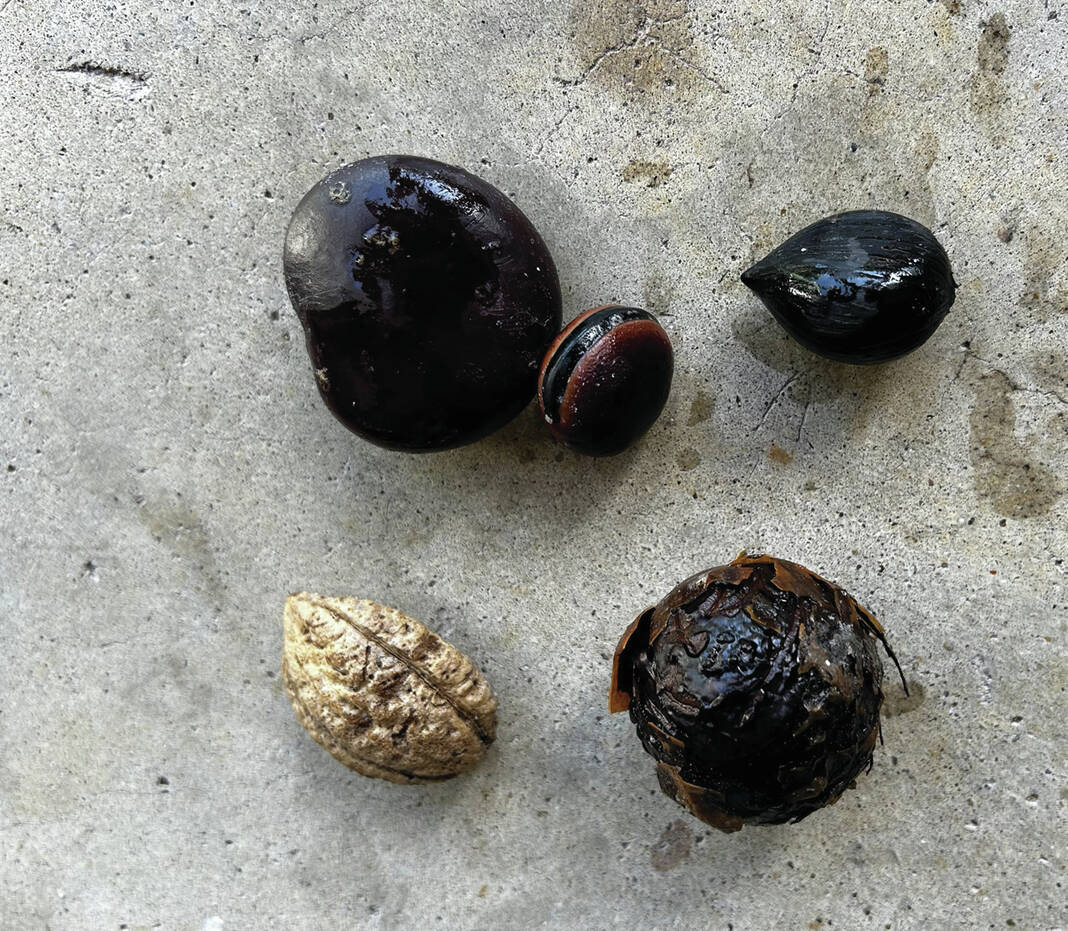 Sea heart, hamburger bean, starnut, almond and Troolie palm drift seeds (Courtesy: Anita Westervelt)
Sea heart, hamburger bean, starnut, almond and Troolie palm drift seeds (Courtesy: Anita Westervelt)Hundreds of miles offshore, floating oceanic debris accumulates in giant swirling eddies, gets swept along by currents, tumbled around in wave action, shoved aground, ending as tidewrack on a beach.
A wrack line is that line of tidewrack left on the beach by high tide. It is a most excellent place to look for sea beans.
Also called drift seeds, sea beans are seeds, nuts, fruits and pods of tropical and rainforest trees and vines. The fruits or seeds fall from the plants into waterways and end up in the ocean where they begin their tumultuous journey, eventually coming to rest sometimes thousands of miles from their homeland.
Savvy beachcombers pick through the jumble of sea grasses, ocean debris, shells, corals, driftwood, rubbish and abandoned objects at the wrack line, searching for sea beans.
Sea beans are hard and buoyant, capable of surviving long ocean journeys that might have begun off the west coast of Africa, the Amazon Basin, South America, Central America and islands of the Caribbean and Gulf of Mexico.
Any object floating on the surface of the ocean is at the mercy of wind, waves and ocean currents; violent action during storms at sea can also churn up matter from the ocean floor and deposit it on distant shores.
The more turbulent the weather, the more action in the ocean; the more action in the ocean, the better the pickings on the beach. Calm seas are also apt to deposit sea beans in reach of a beachcomber.
A few varieties found on local beaches are described below with the scientific name of the plant that produces the seed.
Troolie palm, Manicaria saccifera, seeds are the more commonly found sea beans. The palm grows in swampy areas in Central and northern South America and south to Peru. They are also called golf ball sea beans; their size and shape are similar to that moniker. The seed has a single scar, like a bellybutton; its reddish-brown to black vegetative covering sheds in layers.
Tropical almond, Terminalia catappa, sea beans are blond, fibrous and almond-shaped, from an almond tree native to tropical Asia and introduced throughout the Tropics.
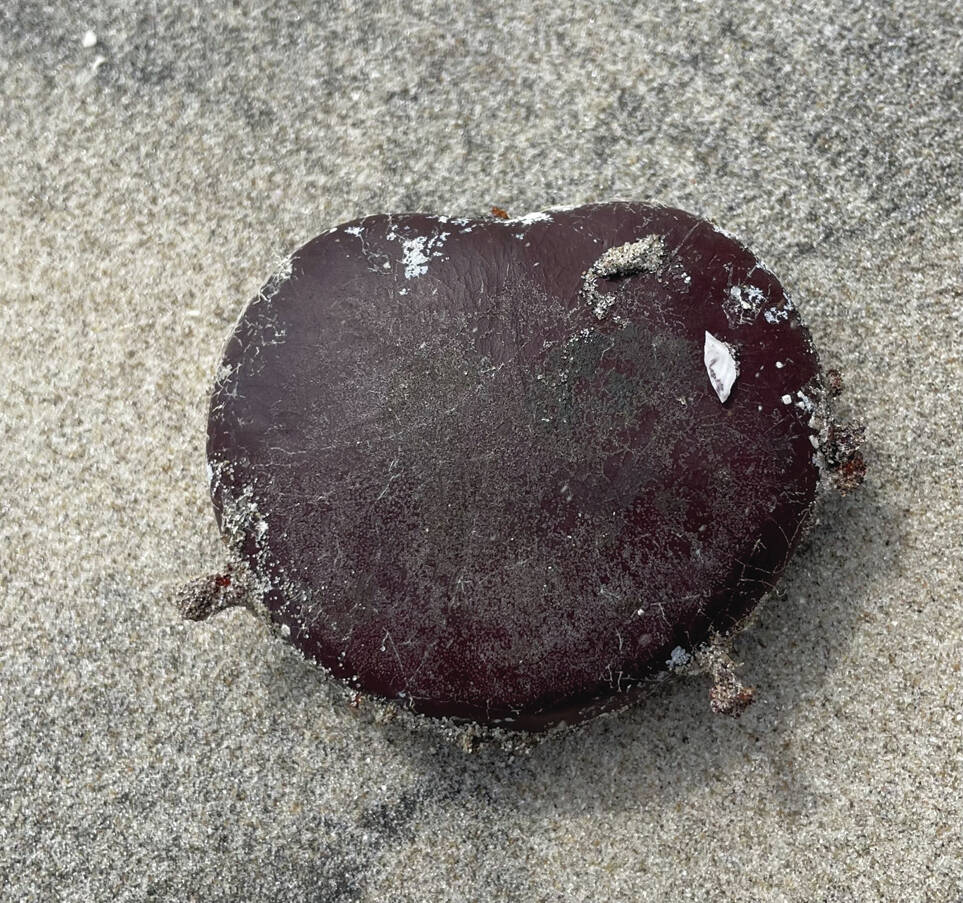 Sea heart sea bean (Courtesy: Anita Westervelt)
Sea heart sea bean (Courtesy: Anita Westervelt)Sea hearts are from the monkey-ladder vine, Entada gigas, a species of flowering liana. Lianas are woody vines rooted in the ground with long stems that travel through tree canopies seeking sunlight. The vine is in the pea family and native to Central America, South America, the Caribbean and Africa. The beans are just over two inches with a heart shape indentation or not.
Hamburger beans, Mucuna urens, (red) and Mucuna sloanei (brown) are seeds of tropical rainforest vines native to the American Tropics and West Indies. The beans are about the size of a quarter and resemble a dark hamburger patty, sandwiched between a lighter shade bun.
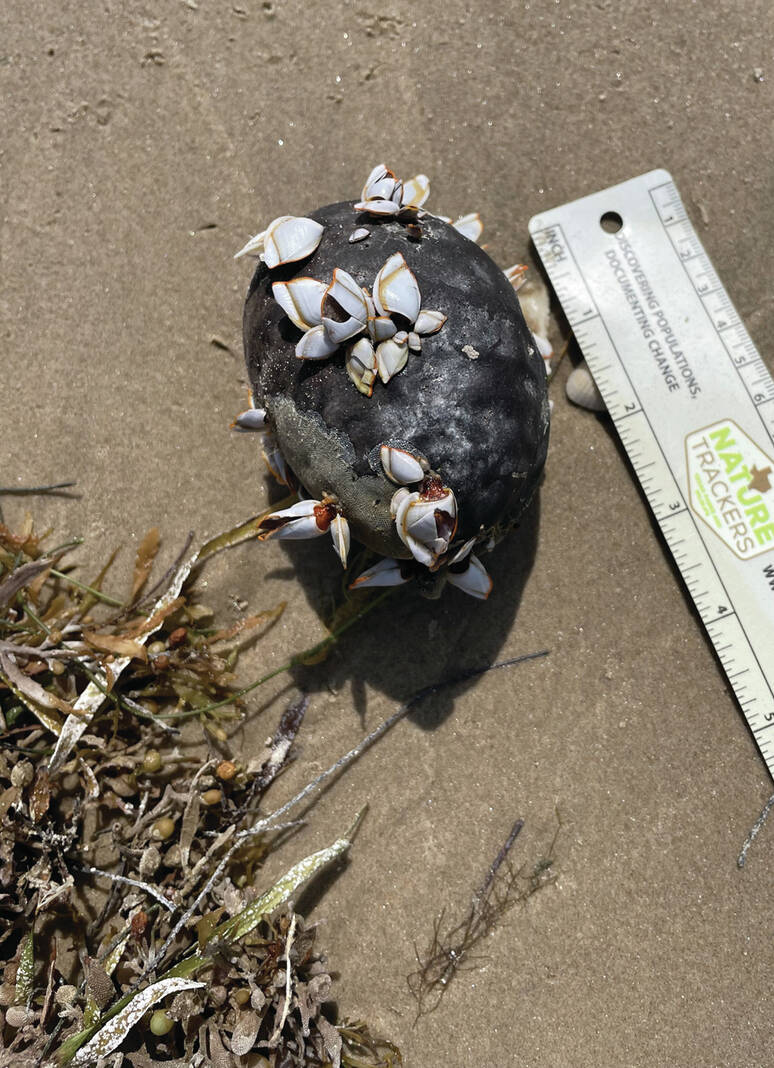 Donavan’s brain sea bean (Courtesy: Anita Westervelt)
Donavan’s brain sea bean (Courtesy: Anita Westervelt)Donovan’s brain, also called brainfruit or brain bean, Andira galeottiana, is fruit from a leguminous tree in the pea family native to southern Mexico. The dark bean is oblong, three inches long and two and one-half inches thick.
Starnut palm, Astrocaryum species, are black teardrop shaped, one inch in length. Lengthwise ridges are typical and easy identifying marks. They are the seeds of the starnut palm which grows in rainforests of Central America in the basins of the Amazon and Orinoco Rivers.
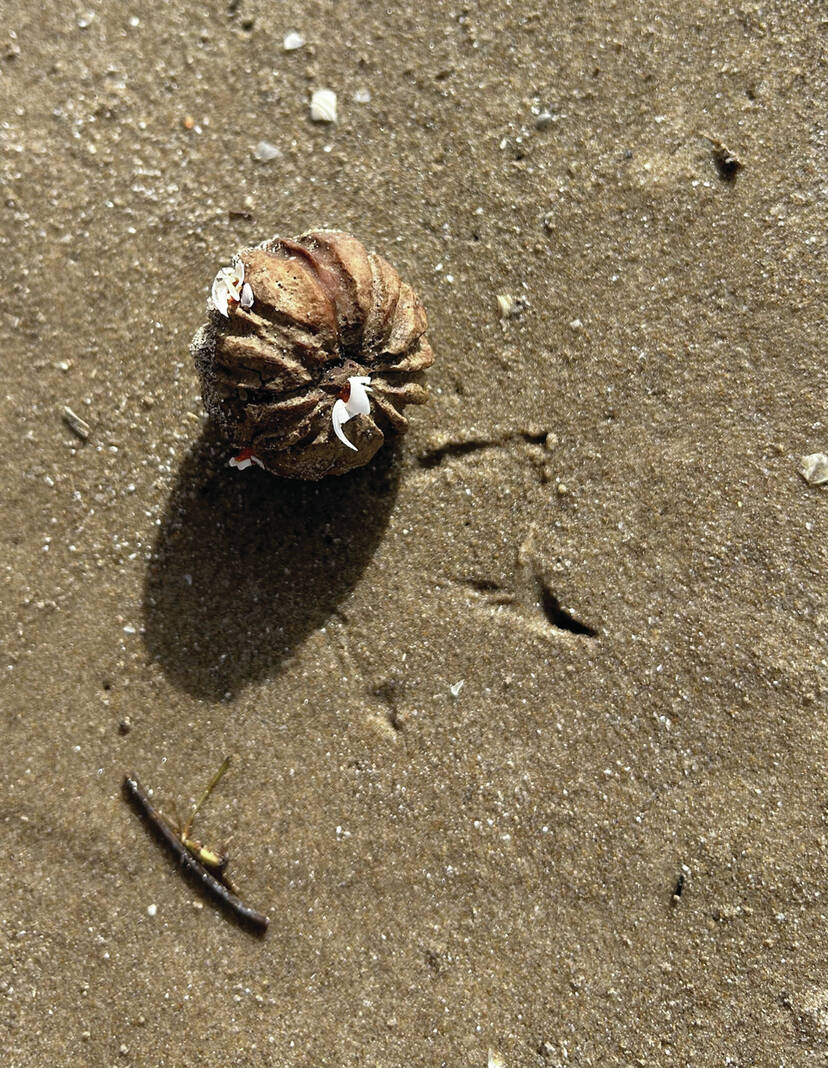 Sea walnut (Courtesy: Anita Westervelt)
Sea walnut (Courtesy: Anita Westervelt)Sea walnuts, Juglans nigra, are round, an inch and a half in diameter, grooved, like a pumpkin, slightly peaked at one end and rounded at the other. Black walnut trees are common from Texas to New York; beached nuts likely washed down the Mississippi River to the Gulf of Mexico.
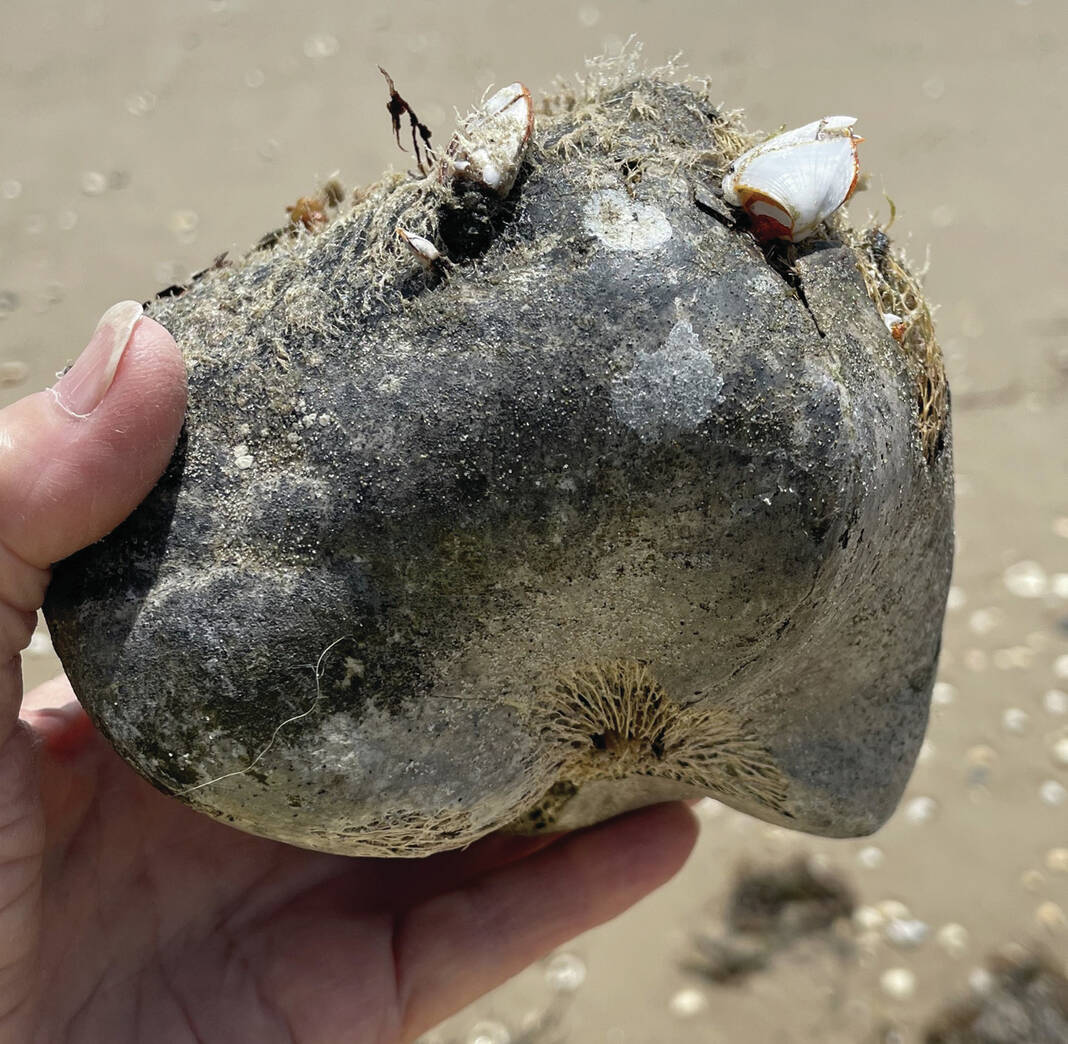 Box fruit from the fish poison tree (Courtesy: Anita Westervelt)
Box fruit from the fish poison tree (Courtesy: Anita Westervelt)Box fruit (fish poison tree), Barringtonia asiatica, is a rare find, a large seed pod from a decorative shade tree from islands of the Indian Ocean to tropical Asia.
American lotus, Nelumbo lutea, seed pod is a fun find. It is the pod of an aquatic flowering water lily plant that grows in lakes, swamps and river edges in North America and the West Indies. The pod breaks away from the plant in the fall. The seeds mostly fall to the waterbed as the encasings shrink; the seeds are not buoyant, but the pods are.
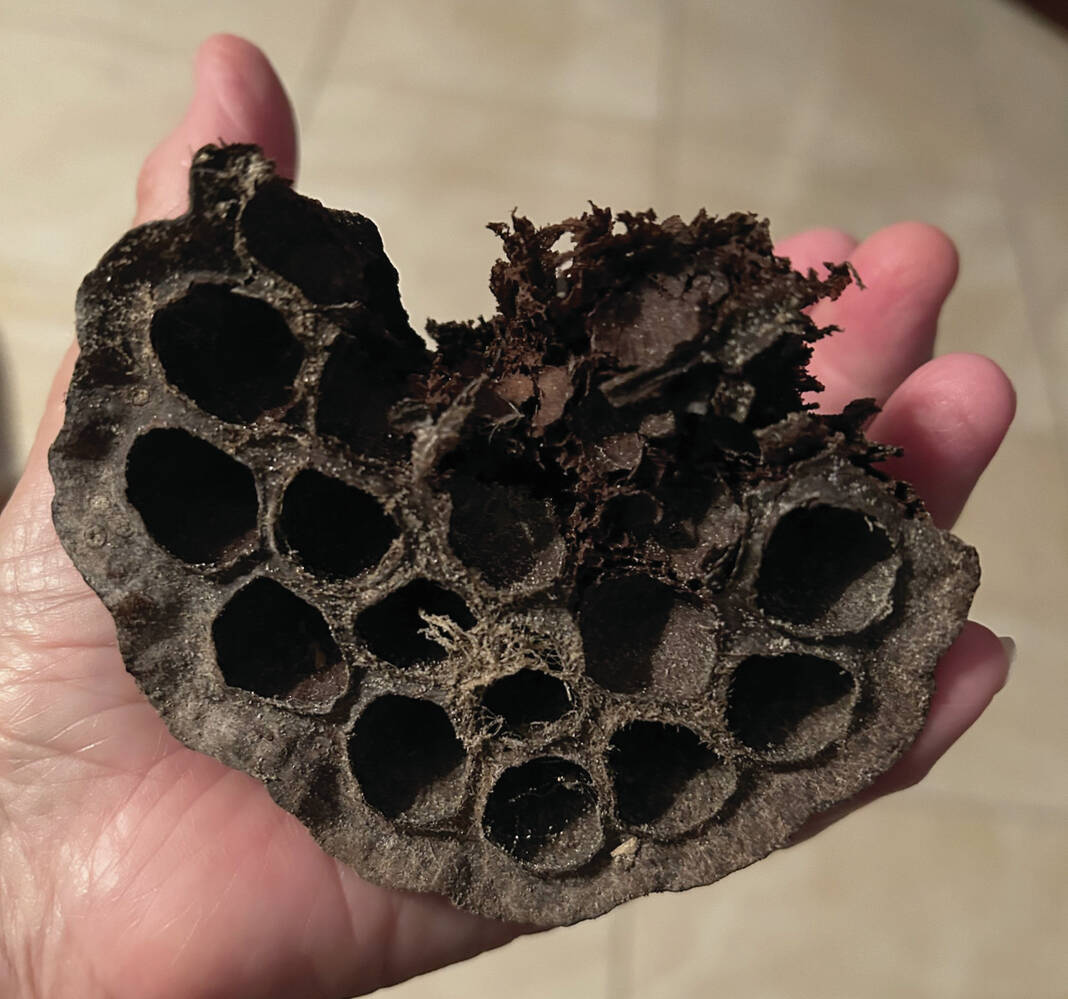 American lotus seed pod drift (Courtesy: Anita Westervelt)
American lotus seed pod drift (Courtesy: Anita Westervelt)Information like this and other mysteries of the seas are addressed in presentations during meetings of the Port Isabel-South Padre Island Shell Club that meets at 1 p.m. the fourth Sunday each month from September through April at Saint Andrew’s By the Sea Episcopal Church, at 1022 N. Yturria St. in Port Isabel. Meetings are free and open to the public.
These sources were helpful in writing this article: seabean.com, tpwd.texas.gov, kindred-spirit.net, “Florida’s Living Beaches” by Blair and Dawn Witherington; “Sea-Beans from the Tropics” by Ed Perry IV and John V. Dennis’ and “The Little Book of Sea-Beans and other Beach Treasures” by Cathie Katz and Paul Mikkelsen.
Anita Westervelt is a Texas Master Naturalist.
The post Head for the beach — and be sure to scour the wrack line for treasures appeared first on MyRGV.com.
 (2).png)
 2 months ago
72
2 months ago
72


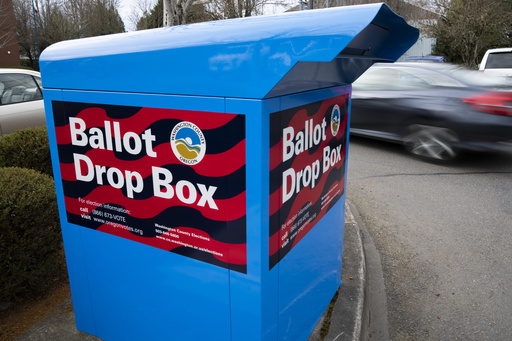
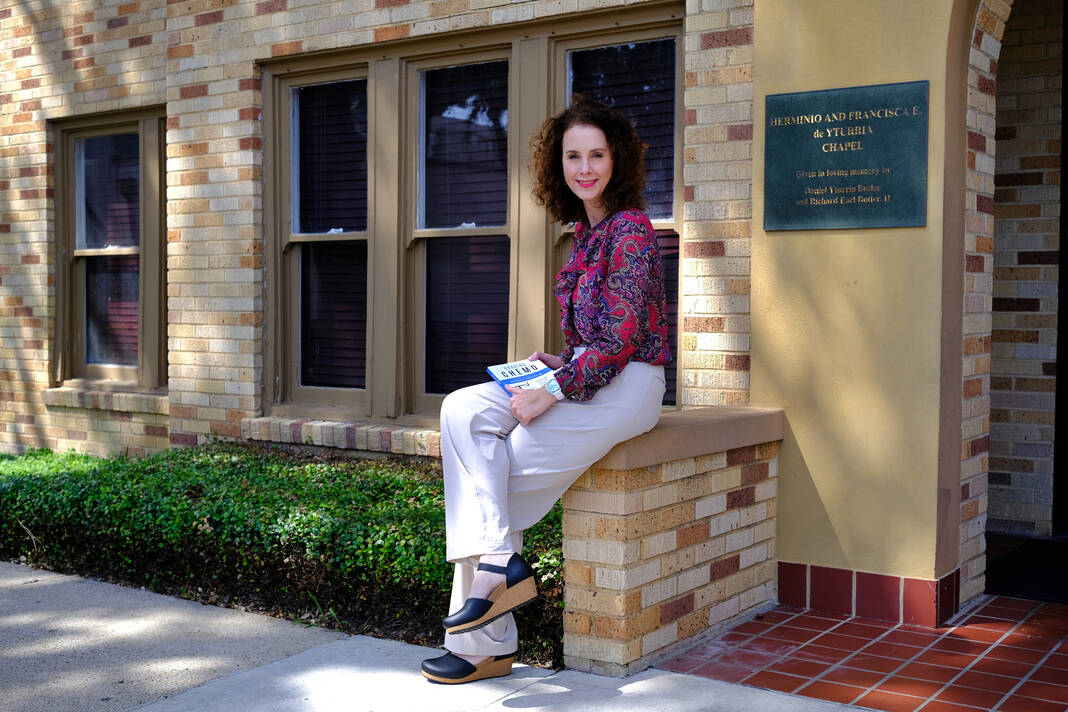



 English (US)
English (US)